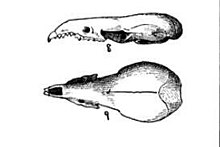
The red-toothed shrews of the subfamily Soricinae are one of three living subfamilies of shrews, along with Crocidurinae and Myosoricinae. In addition, the family contains the extinct subfamilies Limnoecinae, Crocidosoricinae, Allosoricinae and Heterosoricinae. These species are typically found in North America, northern South America, Europe and northern Asia. The enamel of the tips of their teeth is reddish due to iron pigment. The iron deposits serve to harden the enamel and are concentrated in those parts of the teeth most subject to wear. Members of the genera Chimarrogale, Nectogale, Neomys (Nectogalini) and some members of Sorex (Soricini) are known as water shrews, due to having a semi-aquatic lifestyle.

The marsh shrew, also known as the Pacific water shrew, Bendire's water shrew, Bendire's shrew and Jesus shrew is the largest North American member of the genus Sorex. Primarily covered in dark-brown fur, it is found near aquatic habitats along the Pacific coast from southern British Columbia to northern California. With air trapped in its fur for buoyancy, marsh shrews can run for three to five seconds on top of the water. It measures about 16 cm (6.3 in) in length, including a 7-centimetre (2.8 in)-long tail, and weighs an average of 14.5–16 g (0.51–0.56 oz). The marsh shrew's diet consists mainly of invertebrates, which it hunts on land and in the water. They are rare; their populations are thought to be in decline, and they are considered endangered in parts of their range.

The genus Sorex includes many of the common shrews of Eurasia and North America, and contains at least 142 known species and subspecies. Members of this genus, known as long-tailed shrews, are the only members of the tribe Soricini of the subfamily Soricinae. They have 32 teeth.
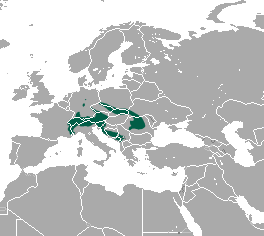
The alpine shrew is a species of mammal in the family Soricidae. It is found in the alpine meadows and coniferous forests of central and southern European mountain ranges.

The Arizona shrew is a species of shrew native to North America.

Baird's shrew is a species of mammal in the family Soricidae. It is endemic to northwest Oregon. Baird's shrew inhabits moist conifer forests.

The Kamchatka shrew is a species of mammal in the family Soricidae. It is endemic to Russia.

The Iberian shrew or Lagranja shrew is a species of mammal in the family Soricidae. It is found in Portugal and Spain.
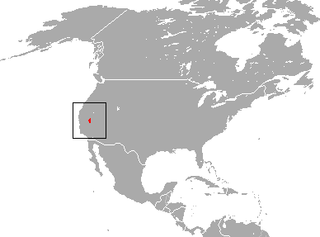
The Mount Lyell shrew is a species of mammal in the family Soricidae. It is named for Mount Lyell in Yosemite National Park, the area where the shrew has been most commonly found.

The large-toothed shrew or Mexican large-toothed shrew is one of 77 species within the genus Sorex. Registered on the IUCN Red List as vulnerable with a decreasing population, the Mexican large-toothed shrew has been recorded only 14 times in seven locations. The shrew is a member of the red-toothed shrew subfamily Soricinae, and the more taxonomically defined tribe Soricini. Members of the latter category exhibit long tails relative to body size.
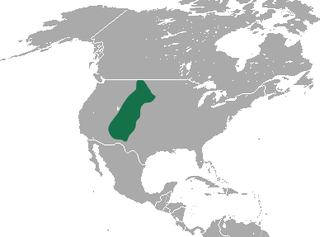
The dwarf shrew is a species of mammal in the family Soricidae endemic to Arizona, Colorado, Montana, Nebraska, New Mexico, South Dakota, Utah, and Wyoming in the United States. The type locality is Estes Park, Colorado, USA.

The ornate shrew is a species of mammal in the family Soricidae (shrews). It is endemic to western North America, ranging from Northern California in the United States to Baja California in Mexico. Eight subspecies are known, including the extinct tule shrew, known only from four specimens collected in 1905, and the Suisun ornate shrew, a species of conservation concern in California. Through skull morphology research and genetic testing on Ornate shrew populations, it has been shown that there are three main genetic subdivisions: The Southern, Central and Northern. These three genetic subdivisions of Ornate shrew arose from populations of Ornate shrews getting geographically isolated from other populations.

Preble's shrew is a small shrew distributed across the Great Basin of the United States and southern British Columbia in Canada.
The Sado shrew is a subspecies of mammal in the family Soricidae. It is endemic to Japan, and more specifically, the Japanese island of Sado. Although it is sometimes referred to as its own species, more recent scholarship identifies it as a subspecies of the Shinto shrew. However, there are significant morphological differences between the species.
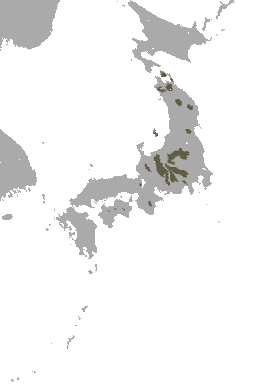
The Shinto shrew is a species of shrew of the genus Sorex that lives only on the islands of Japan. It is a mole-like mammal with a pointed snout, very small ears, and a relatively long tail. Like most shrews, it is tiny, has poor eyesight, and a very good sense of hearing and smell which it uses to locate its prey, mainly insects.

Trowbridge's shrew is a species of mammal in the family Soricidae. It is found in southern British Columbia in Canada and in Washington, Oregon, and California in the United States.

The southeastern shrew is a species of mammal in the family Soricidae. It is found in the southeastern United States.
